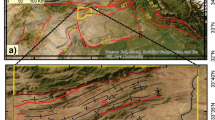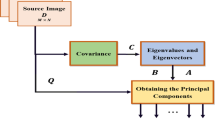Abstract
According to the low reconstruction efficiency and precision, a kind of spectral reflectance reconstruction method based on the algorithm of compressed sensing is provided. It can make full use of the sparse characteristics of spectral reflectance to improve the reconstruction precision and efficiency. In this paper, the first three principal components of the spectral reflectance with high contribution is obtained by the method of principal components analysis based on the analysis of the algorithm of compressive sensing and the least squares method. The dimension of the high dimensional spectral reflectance is reduced. The high dimensional spectral reflectance image is reconstructed by the iterative threshold method of the algorithm of compressive sensing. The simulation of the spectral reflectance reconstruction is simulated by the method of principal components analysis and algorithm of compressive sensing through the MATLAB software simulation platform. From the simulation, we can conclude that the reconstruction accuracy and efficiency by the algorithm of compressive sensing are better than the one by the method of pseudo inverse. The reconstruction accuracy is affected by the selection of training sample set, the sampling interval, and the iteration number. The reconstruction accuracy decreases as the increase of the sampling interval and the decrease of the iteration number and the contribution of the first three principal components. The reconstruction accuracy increases as the increase of the iteration number. The higher similarity between the selected training samples set and testing samples, the better representative of the training samples and reconstruction accuracy. The spectral reflectance reconstruction method based on the algorithm of compressed sensing can make full use of the sparse characteristics of spectral reflectance to improve the reconstruction accuracy and efficiency.










Similar content being viewed by others
References
Amirshahi, S.H., Amirhahi, S.A.: Adaptive non-negative bases for reconstruction of spectral data from colorimetric information. Opt. Rev. 17(6), 562–569 (2010)
Baraniu, R.: Compressive sensing. IEEE Signal Process. Mag. 24(4), 118–124 (2007)
Bioucas-Dias, J., Figueiredo, M.: A new TwIST: two-step iterative shrinkage/thresholding for image restoration. IEEE Trans. Image Process. 16(12), 2992–3004 (2007)
Candes, E., Wakin, M.: An introduction to compressive sensing. IEEE Signal Process. Mag. 25(2), 21–30 (2008)
Cheung, V., Westland, S., Li, C.J., Hardeberg, J., Connah, D.: Characterization of trichromatic color cameras by using a new multispectral imaging technique. J. Opt. Soc. Am. A 22(7), 1231–1240 (2005)
Day, E.A., Berns, R.S., Taplin, L.A.: A psychophysical experiment evaluating the color accuracy of several multispectral image capture techniques. J. Imaging Sci. Technol. 48(2), 93–104 (2004)
Fairman, H.S., Brill, M.H.: The principal components of reflectances. Color Res. Appl. 29(2), 104–110 (2004)
Figueiredo, M., Nowak, R., Wright, S.: Gradient projection for sparse reconstruction: application tocompressed sensing and other inverse problems[J]. IEEE J. Sel. Top. Signal Process. Spec. Issue Convex Optim. Methods Signal Process. 1(4), 586–597 (2007)
Katz, O., Bromberg, Y., Silberberg, Y.: Compressive ghost imaging. Appl. Phys. Lett. 95, 131110 (2009)
López-álvarez, M.A., Hernández-Andrés, J., Romero, J., Olmo, F.J., Cazorla, A., Alados-Arboledas, L.: Using a trichromatic CCD camera for spectral skylight estimation. Appl. Opt. 47(34), 31–38 (2008)
Romberg, J.: Imaging via compressive sampling. IEEE Signal Process. Mag. 25(2), 14–20 (2008)
Rump, M., Zinke, A., Klein, R.: Practical spectral characterization of trichromatic cameras. ACM Trans. Graph. 30(6), 170 (2011)
Shen, H., Zhang, H., Xin, J.H., Shao, S.: Optimal selection of representative colors for spectral reflectance reconstruction in a multispectral imaging system. Appl. Opt. 47(13), 1494–2502 (2008)
Shen, H., Cai, P., Shao, S., Xin, J.H.: Reflectance reconstruction for multispectral imaging by adaptive Wiener estimation. Opt. Express 15(23), 15545–15554 (2007)
Shen, H., Wan, H., Zhang, Z.: Estimating reflectance from multispectral camera responses based on partial least-squares regression. J. Electron. Imaging 19(2), 205–212 (2010)
Tzeng, D.Y., Berns, R.S.: A review of principal component analysis and its Applications to volor technology. Color Res. Appl. 30(2), 84–98 (2005)
Acknowledgments
This study is supported by the National Natural Science Foundation of China (Grant No. 61405115), the Natural Science Foundation of Shanghai (Grant No. 14ZR1428400), Innovation Program of Shanghai Municipal Education Commission (Grant No. 14YZ099).
Author information
Authors and Affiliations
Corresponding author
Rights and permissions
About this article
Cite this article
Zhang, L., Liang, D., Pan, Z. et al. Study on the key technology of reconstruction spectral reflectance based on the algorithm of compressive sensing. Opt Quant Electron 47, 1679–1692 (2015). https://doi.org/10.1007/s11082-014-0025-x
Received:
Accepted:
Published:
Issue Date:
DOI: https://doi.org/10.1007/s11082-014-0025-x




